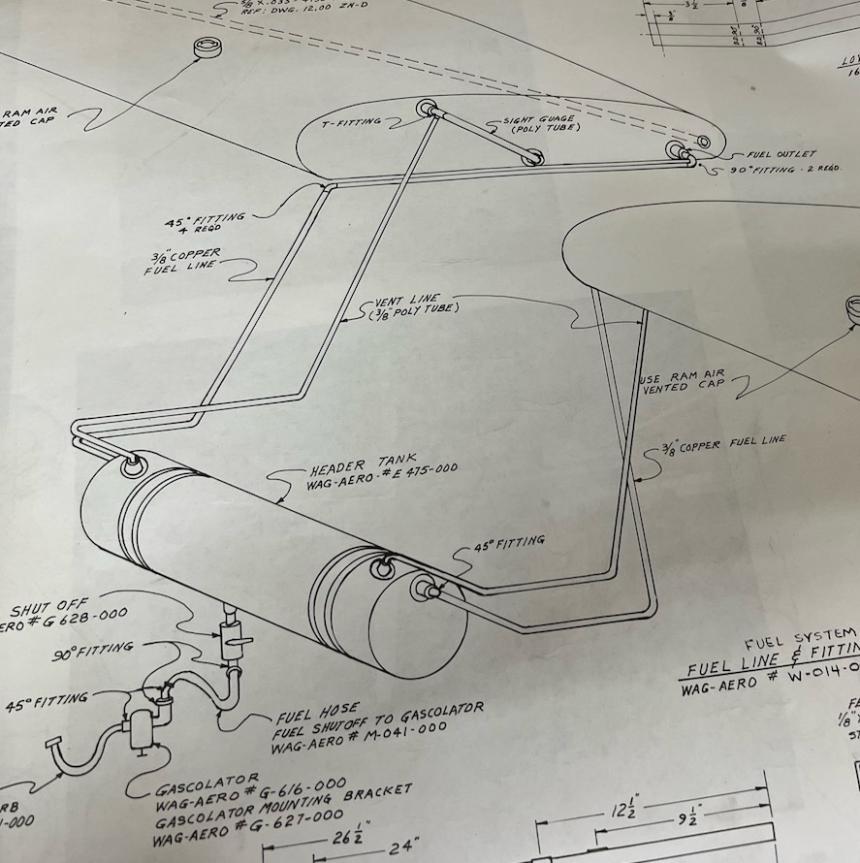I'm trying to figure out the fuel system for my Wag 2+2/ PA14 scratch build. Two wing tanks, each with front and rear ports. Plans call for a header tank with simple on/off valve. Does anyone have a good diagram for a system that works with either the header tank or without? I'm concerned about unporting during climbing or descending. If fuel lines are run along wing root than forward as the plans show, the rear port would be below the flow of the fuel. Wondering how others have solved this issue. My tanks differ from the diagram as they have a forward port and a rear port on each tank.
Thanks,
Marty



 Reply With Quote
Reply With Quote



